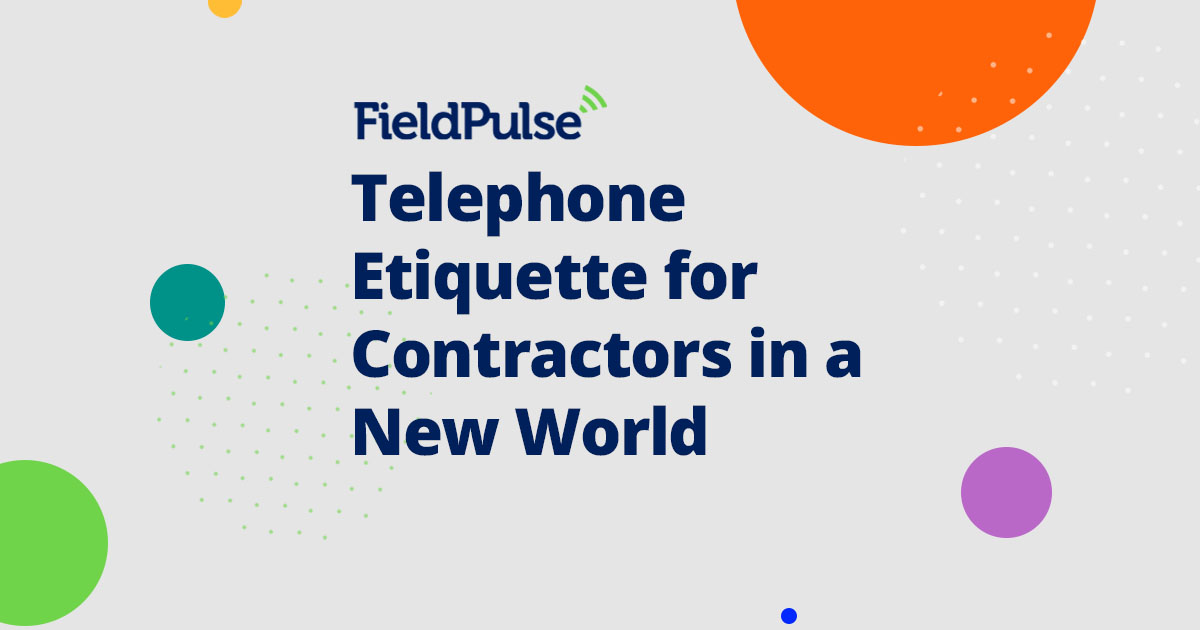
A little over a year ago, Forbes released a report on JP Morgan Chase’s offer to eliminate voicemail for their estimated 250,000 employees located at 5600+ branches across the country.
Who took the offer? Roughly two-thirds of the personnel. Dig a little deeper, and you’ll find that 47% of their workforce is age 35 and younger. JP Morgan is just one of a growing list of corporations that are making a move to reduce or eliminate what has become a ‘burden’ to the mid to younger generation – a.k.a the millennials.
Coca-Cola, Bank of America, Microsoft and Citicorp have all followed suit. Their refusal to embrace answering voicemail as a part of their daily work activity (or their everyday life for that matter) has created a trend that has spiraled upward into the older generation almost by sheer force. After all, why leave a voicemail if no one is there to answer it?
Easily manage all of your customer communications with FieldPulse Engage. Never lose track of a customer conversation again. Start your free trial.
How Does This Phone Trend Affect Contractors?
Contractors have to speak directly to clients and business partners on a regular basis. In today’s world, etiquette is more than passing on or receiving correspondence in a polite and concise manner. It’s more about respecting the platforms that their customers use for communication and learning how to effectively use the new tools and methods for getting the word out. This can be a challenge for seasoned business owners who haven’t quite adapted to the new drift.
Breaking It Down
What are useful communication tools for contractors in the modern age and what are etiquette practices that get your clients to respond as you want them to? Let’s break it down.
Texting
Texting is the epitome of communication in the modern business world. Millennials read and respond to texts in the amount of time it takes for you to pick up the phone and dial the numbers. The obvious question, however, is how can that possibly be efficient when you have to explain things like building plans, last minute decisions, or problems that occur during construction? Right, when it comes it to long conversations, texts don’t work. Younger clients, however, get around that dilemma by getting to the point and trimming the fat off their content. They don’t require long paragraphs and drawn out explanations. Learning to be precise with as few words as possible will get your client’s attention and more than likely get a fast response via text or phone call.Etiquette Tips: Prompt replies, avoid personal or emotional words, know when to end the conversation.
Calls
Over the last decade, endless research has shown that clients dread calls from companies and employees of companies dread calls from customers. According to LunaMetrics the number one reason for this is a lack of preparation. But let’s face it; there are scenarios where a phone call is required. The solution: Be prepared. If you have time to plan a phone call, then treat it like a business meeting. Take a few minutes to think through the conversation, have a game plan, and then execute the conversation as efficiently as possible. As with texting, keep the conversation short and to the point. Even if your clients are not busy, they still have little patience over the phone. They will appreciate what they perceive to be your sensitivity.Etiquette Tips: Friendly tone, listen carefully, address questions directly, ask when is the best time to call.
If You Do Leave a Voicemail
The first thing you need to understand if you decide to leave a voicemail is that there’s at least an 80% chance it will not be listened to. Instead, your client will ignore it, or he or she will pick up the phone to call you without ‘wasting their time’ listening to the voicemail. As frustrating as this is, it’s simply a reality that is not going away. That being said if you leave a voicemail, follow these simple steps:
- Clearly state your name and your company.
- Clearly state the purpose of your call. Be detailed.
- Clearly ask them to call you back or offer them to text you back if possible.
- Clearly give them your phone number. Repeat it.
- Attempt to do all of this in 15 seconds or less.
It can also be a good idea to follow up your voicemail with a text message or email letting them know you called and left a voicemail.Smartphones now have the capability to transcribe the voicemail so that your clients can read it instead of just listening to it. This tool can work to your advantage. If you’re unfamiliar with voicemail transcription, you can see an example of it here on Tech News World’s site under the paragraph entitled ‘New Messaging Features.’Etiquette Tips: Never sound frustrated or impatient, do not leave a generic message and do not leave multiple voicemails hoping your client will get frustrated and call you back.
Placing Your Clients On Hold
The general rule of thumb for putting a client on hold is don’t do it. Interrupting a conversation conveys several subliminal and direct messages to someone who is waiting on the other end for you to return. Keep in mind that your clients aren’t thinking about whether you’re in the middle of a job and assume you’re prepared to talk.
- First, it tells them that you are distracted and not focused on the conversation, thus, not focused on them.
- Second, it leads them to believe that you may not be organized or have the answers they’re looking for.
- Third, it communicates poor time management. Could you have called at a better time without the interruption?
Etiquette Tips: Always ask first before placing someone on hold, if the hold is lengthy, ask to call back, limit to less than one minute.Granted, contractors often find themselves in situations where quick calls have to be made in the midst of chaos and employee interaction. The goal, however, should be to place your call with a client at the center of your attention and keep it there until you hang up with no interruptions.


